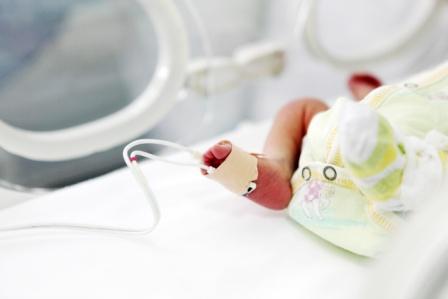If you’ve followed the story behind The Hudson Initiative, you’ll know that its main goals are to introduce a law that will see no newborn baby go home without having undergone a Pulse Oximetry test. What many won’t know is why Pulse Oximetry, or PulseOx, is so vitally important.
Low saturation levels indicate a problem with your baby’s lungs or heart
I’m sure you’ve watched Grey’s Anatomy or ER and it all sounds kind of fancy when they shout “sats are low, doctor, we need you in OR 3!” But, what are ‘sats’, actually? And more specifically, what does it mean when your baby’s sats are low?
All humans required a certain level of oxygen saturation (sats or SpO2) in their blood (95 to 100 percent saturation is the ideal). Low sats can indicate a problem. In infants, specifically, low saturation levels can indicate a problem with the baby’s lungs or heart.
PulseOx measures the levels of oxygen in your baby’s blood
After the baby is a day old and ideally before they are taken home, a simple, cost effective PulseOx test, which measures the levels of oxygen in a baby’s blood, can be conducted. The results of this test can potentially lead to the identification of a Congenital Heart Defect (CHD).
One of the first signs that there is a problem with your baby’s heart is a lack of oxygen in the blood. This is simply due to the fact that the little heart isn’t doing what it should, the lungs are affected and the baby becomes symptomatic.
In Hudson’s case, we were actually lucky. I had not made it to the nursery for his daily check and the paediatrician had come to my room. In that quiet space, he heard the faintest murmur. This led to the tests that ultimately identified his Truncus Arteriosus.
Without that check, we would have taken Hudson home, his fingernails would have started turning blue and he’d have hit a fever six weeks later (the day before he was scheduled in for his operation in real life), we may not have noticed and the chances are his heart would have failed very soon thereafter and he would have died. We would have blamed SIDS or they’d have called it “unknown causes” and that would have been that.
I say we were lucky because we were given extra time with our baby.
Some babies turn blue at birth, others have less obvious symptoms
Some other babies are lucky too – and I say this knowing how strange it sounds – they turn blue at birth or shortly thereafter when medical personnel are around to make stuff happen.
But, some baby’s symptoms are less obvious and they only become evident when the child is home already, which is why PulseOx is so important.
What new moms can look out for
Signs new moms can look out for include;
- Cyanosis (CHD babies in distress tend to develop a blue hue around their lips, tongue and extremities like fingers and toes)
- Some will demonstrate an increased breathing rate or difficulty breathing
- Lacklustre feeds and laboured feeds (the baby will sweat) are common
- Failure to thrive (low weight gain or weight loss) is a sign
- Decreased energy, which is difficult to gauge with small babies
- Prolonged fevers
PulseOx does lead to the identification of CHDs, not all the time but often enough and the earlier these babies are diagnosed, the better their chances are of surviving.
How is PulseOx administered?
A tiny saturation monitor is clipped to the baby’s hands or feet. It doesn’t hurt, doesn’t require any painful procedures to be conducted, and shows results within a matter of seconds.
For moms that demand PulseOx before they take their babies home (at least until it’s a legal requirement), the desired outcome is a reading of 95 to 100 under the SpO2 area of the monitor.
This test can only be conducted after the child is 24 hours or older because until then, his little body is still settling and getting to know itself. Anything lower than 95 will require a further test until an average is determined.
Once a potential issue has been identified, you will see a specialist paediatrician who will determine the exact cause of the problem. And from there, you can make the decisions that need to be made to ensure the best outcome for your baby.
Andrea Slater
Latest posts by Andrea Slater (see all)
- What is Pulse Oximetry and why does your newborn need this test? - August 6, 2014
- What to expect from your 20 week scan - July 9, 2014
- A mom’s heartfelt eulogy to her four month old son - May 15, 2014
-
No Comments" href="https://all4baby.co.za/babies-6-12-months/learning-development/1627/red-flags-warning-signs-autism-early-childhood/">

Red flags and warning signs of Autism in early childhood
-
No Comments" href="https://all4baby.co.za/babies-6-12-months/learning-development/1602/get-baby-move/">

Get your baby to move more
-
No Comments" href="https://all4baby.co.za/babies-6-12-months/health-hygiene-illness/1585/much-food-baby-eating/">

How much food should your baby be eating?
-
No Comments" href="https://all4baby.co.za/birth/types-of-birth/1560/birth-options-c-section-explained/">

Birth options: C-section explained


 Saving...
Saving...